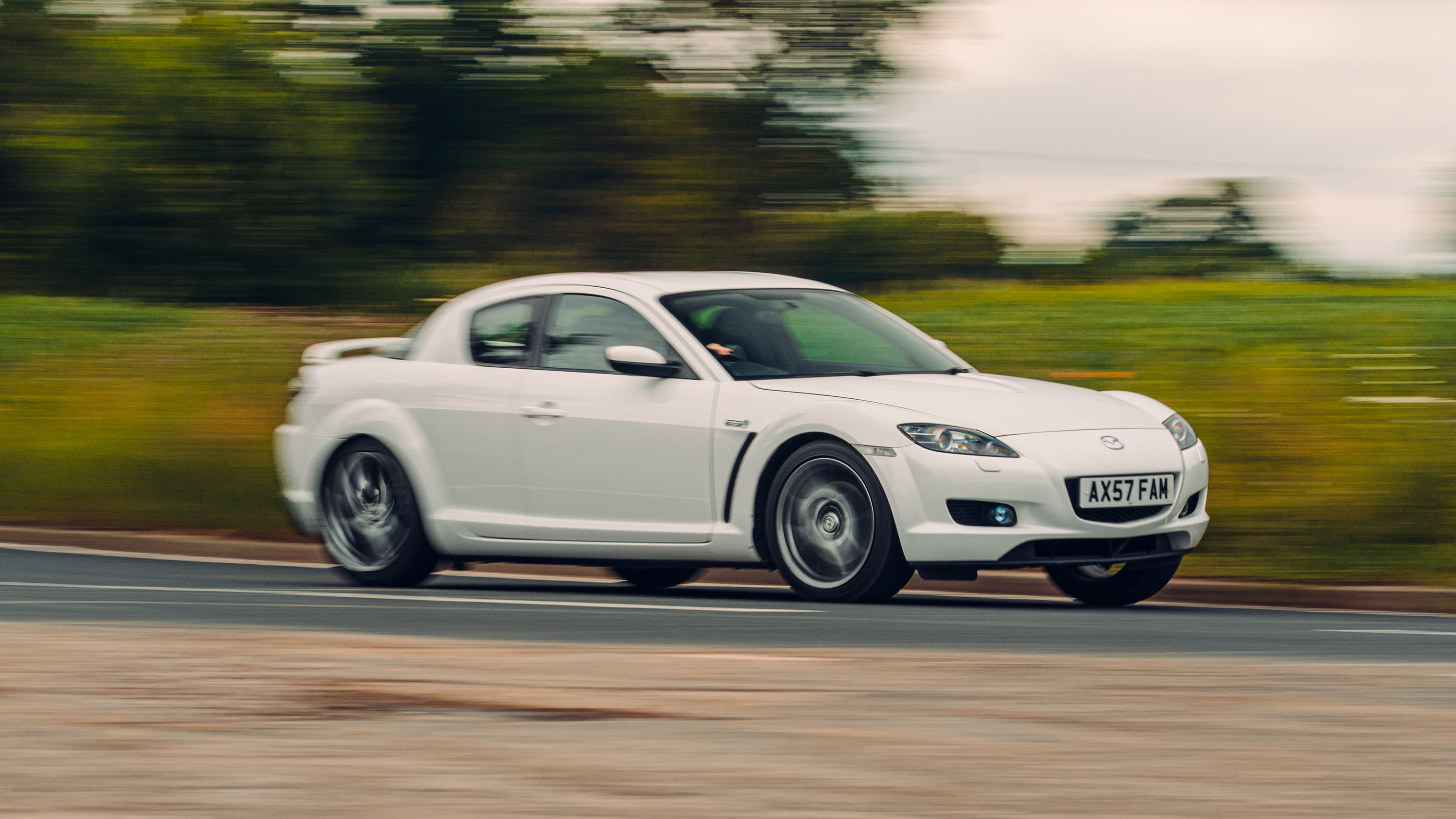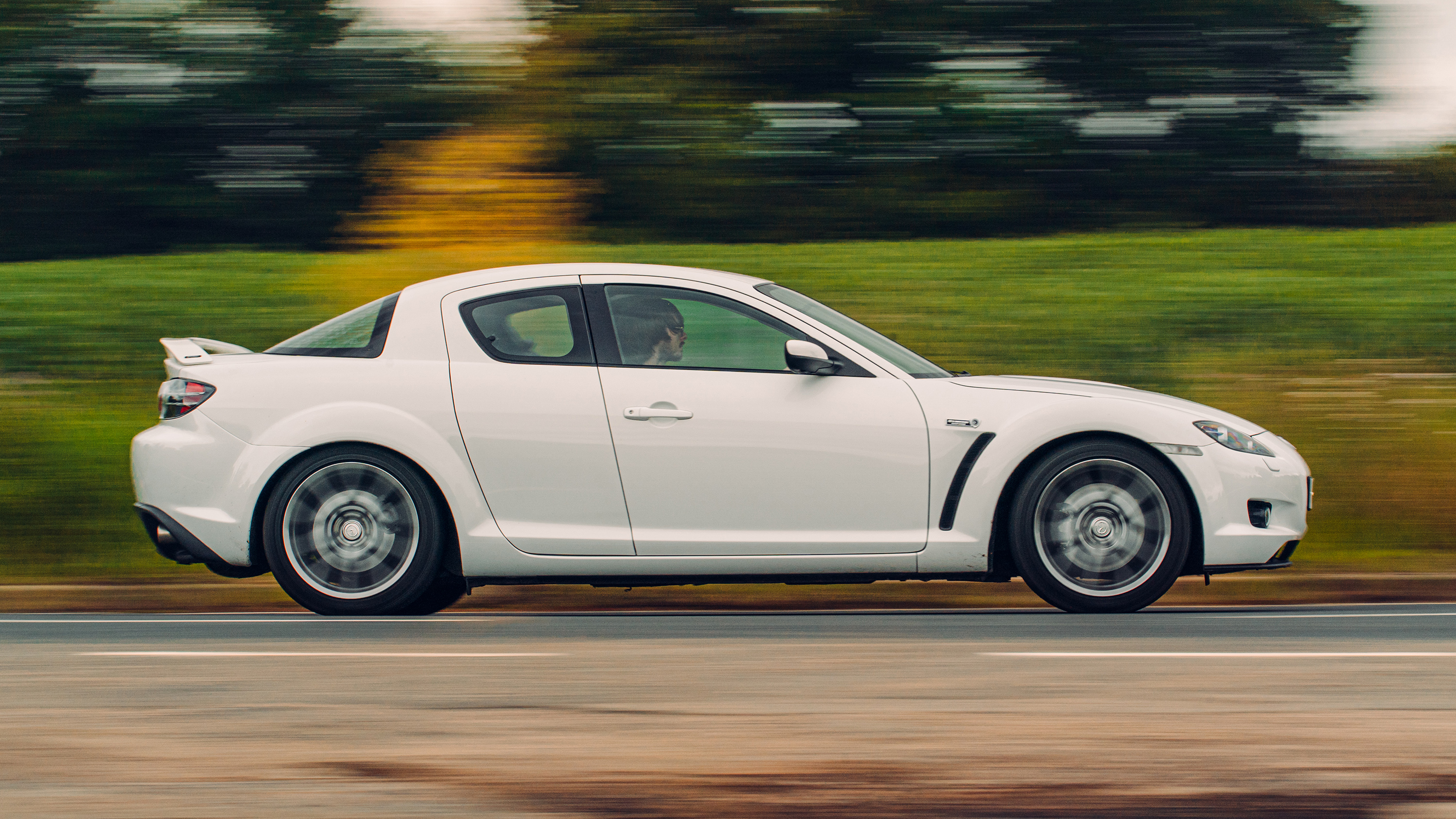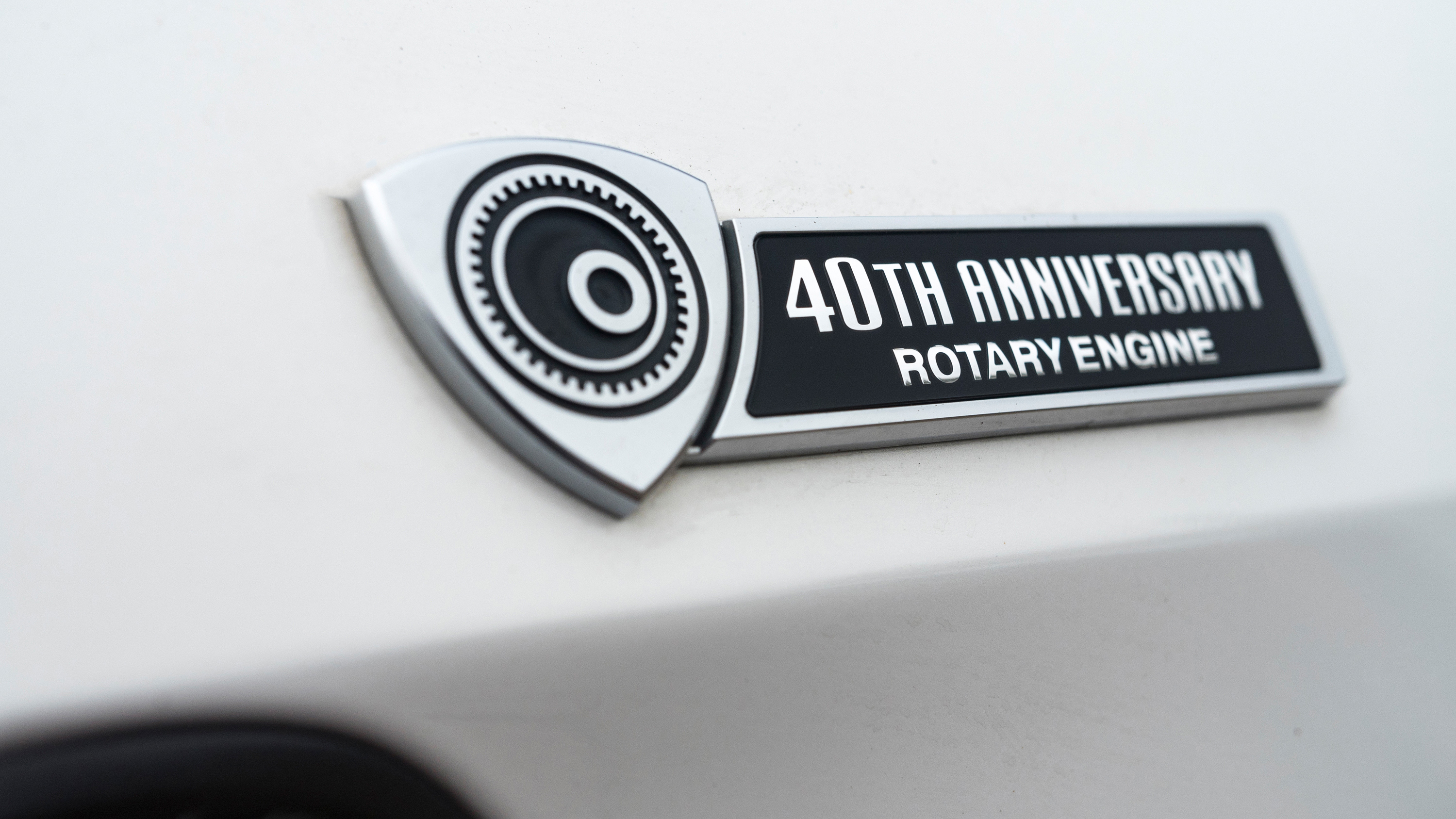
Mazda RX-8 review
Good stuff
Special to look at, deft handling, sweet gear change
Bad stuff
It feels slow nowadays. And yes, the engine loves to go pop
Overview
What is it?
Rarely has a car broken with convention in such a wanton manner. The RX-8 appears to be everything cars today aren’t, and indeed it seemed to be swimming upstream for a fair few years of its existence.
A mid-sized coupe, it launched in 2003, just as mid-sized coupes were kinda dying out. The asteroid was certainly on its way, at least. Rewind to the Nineties and this was a bustling corner of the market. But sitting and naming some of the numerous mainstream examples – Calibra, Cougar, Prelude, Coupe (not every carmaker was imaginative) – only makes you realise how long ago this chapter closed. The rise of the SUV didn’t only claim the four-door repmobile’s popularity.
But the RX-8 was never really billed as a rival to mainstream coupes, even if its ample practicality and modest power output placed it right on their turf. It instead launched in tandem with the Nissan 350Z to join the Honda S2000 in the 'attainable Japanese sports car' sub-niche. These were cars riding the wave of The Fast and the Furious’ success, bringing a bit of JDM sparkle to early Noughties Britain.
So let’s pop back to ‘03 and see what all the fuss is about. A Russian bloke’s bought Chelsea for £150m, Concorde has touched down for the final time and Blu Cantrell’s just replaced Daniel Bedingfield at number one…
Isn’t the RX-8’s engine special?
It is indeed. If you’re spectacularly knowledgeable (or nerdy) you’ll know there’s rotary power up front from the shape of the RX-8’s gear knob and seat inlays – there are aesthetic Easter eggs galore inside the Eight. An evolution of the FD-gen Mazda RX-7’s twin-rotor Wankel engine, it measures just 1.3 litres in size but sends up to 227bhp to the rear wheels via the sole option of a manual gearbox (in the UK, at least).
What’s lightly problematic is the fact it’s naturally aspirated in here, losing the clever sequential twin turbochargers that helped make the RX-7 something resembling a Porsche 911 rival. The RX-8’s power output looks close to its predecessor's on paper, but its paltry 156lb ft of torque makes it a tangibly – often frustratingly – slower car in the good ol’ real world.
I though you guys loved nat-asp cars…
When it’s an engine that revs hyperactively, we do. We’re besotted. But the excitement at seeing a ‘10’ on the RX-8’s rev counter when you climb in is eroded when you’re holding up a sedately driven Meriva on a slight incline because you’ve not dropped two gears. This is a car that needs working hard everywhere, not solely when you’re in the mood for it.
The counterbalance, though, is just how blimmin’ light this car is. Fit a weeny little engine and you get weeny weight in return, and the RX-8's 1.3 tonnes were around around 150 kilos lighter than a contemporary 350Z, the mass split in a clean 50:50 ratio for ultimate handling prowess.
And that’s all despite the RX-8 having something approaching real back seats, with relatively commodious hindquarters accessed via those iconic rear-hinged doors that have made a comeback for Mazda’s MX-30 electric car – with interior handles that look like they might even share the same part number in the huge Hiroshima stock cupboard.
What's the verdict?
What a moment in time the Mazda RX-8 represents. And for all its flaws – chiefly an engine that needs absolutely flogging and troublesome reliability, issues which may be linked – it remains an exotic thing to behold.
The fact Mazda has brought back its doors for the MX-30 and has considered adding a Wankel engine to its maiden EV – as a way of extending its paltry range figure – suggests something of the RX-8 legend still appeals. And if you can pick up a well looked after example for £3,000 or so, it probably still does appeal. Good luck…
Featured

Trending this week
- Car Review
BMW iX3






